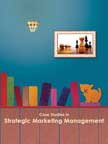Marketing Communications
 |
Details
Textbook:
Pages : 370; Paperback;
210 X 275 mm approx.
Suggested Case Studies
Workbook:
Pages :
299; Paperback;
210 X 275 mm approx, Sample Applied Theory Questions
Pricing
Textbook Price: Rs. 750;
Workbook Price: Rs. 700;
Available only in INDIA
Buy Now
Please allow 5 to 10 days for delivery.
Detail Table of Contents
Creative Strategy : Chapter 7
SUMMARY:
The creative strategy for an advertisement comes into the picture once the objectives for the advertisement are finalized. The creative strategy consists of six elements - creative objective, target market, primary selling proposition, secondary selling proposition, support and tone & manner. Advertisers use various appeals like rational, emotional and others to attract the attention of viewers. Some rational appeals are price, quality, feature, competitive advantage, news and popularity. Emotional appeals, which are used to arouse feelings, are humour, fear, music and sex. Apart from these, companies also use star appeal, reminder and teaser advertisements to promote the product.
|
|
with idea generation, goes on to copywriting and illustration and concludes with layout. In the idea generation stage, the idea used to represent the advertisement is decided. Idea generation is a seven-step process: orientation, preparation, analysis, ideation, incubation, synthesis and evaluation. During copywriting, the words and music are finalized. The print ad contains a headline, subhead, body copy, slogan, etc. which have to be written. In the illustration stage, the pictures to be used are selected or created. Finally, in the layout stage all the elements are placed together to make an advertisement. Commonly used layouts are picture window, Mondrian, type-specimen, copy-heavy, frame, multipanel, circus and rebus. The layout for print advertisements is governed by the principle of balance, proportion, sequence and unity. A television advertisement has different parameters. All this together constitute creative strategy.



